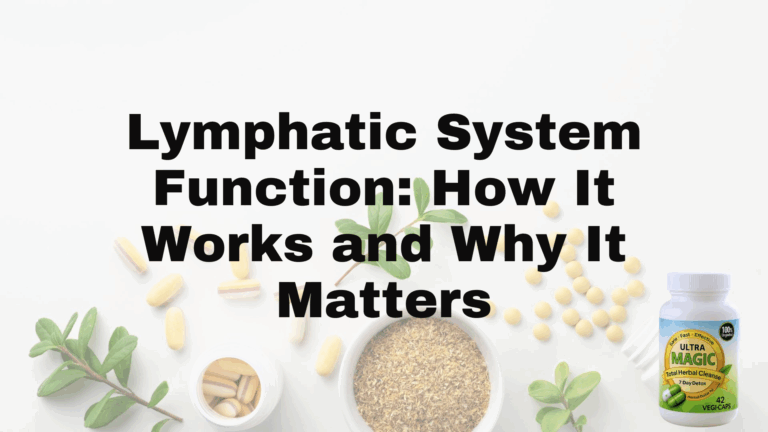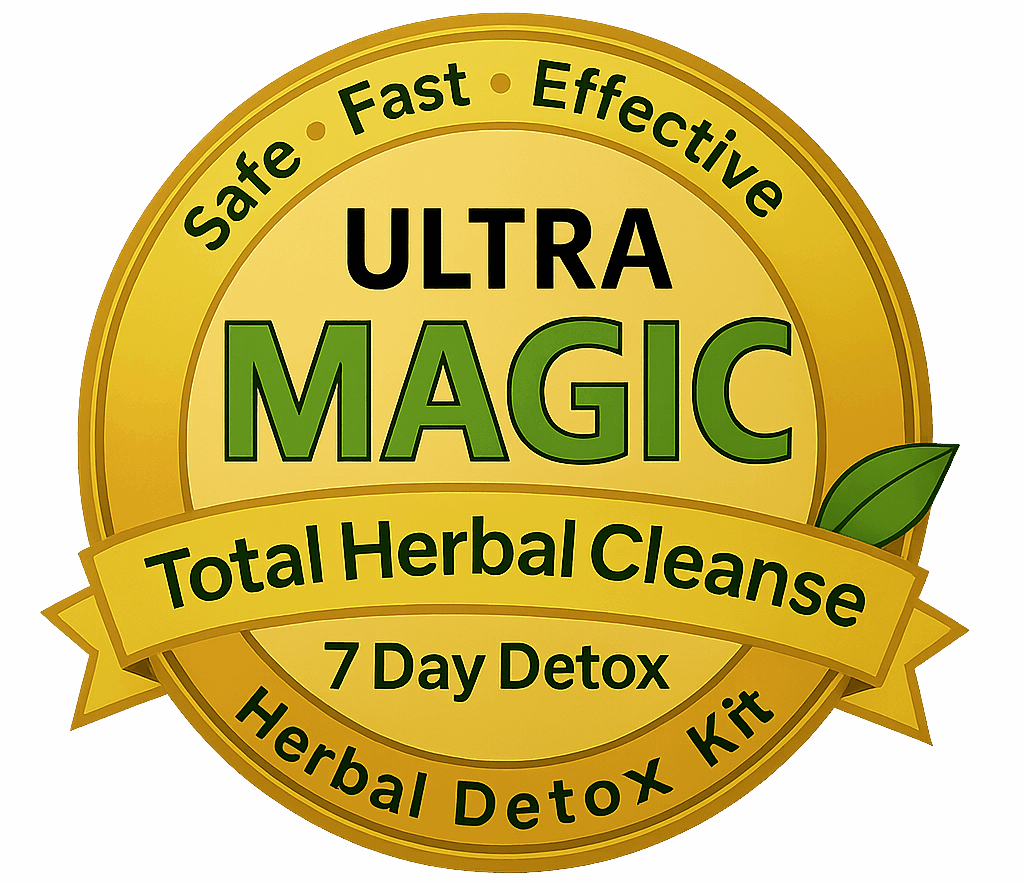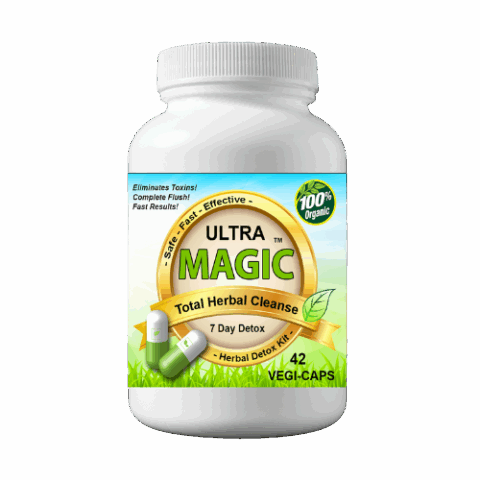
Lymphatic System Function: How It Works and Why It Matters
Quiet but relentless, your lymphatic system is the body’s second circulatory network: a web of vessels, nodes, and organs that collects excess fluid from tissues, filters out germs and cellular debris, and returns this cleaned “lymph” to your bloodstream. It’s a major arm of your immune system—stocked with specialized white blood cells—and it also helps you absorb fats and fat‑soluble vitamins from the gut. When lymph flows well, fluid balance, infection control, and nutrient absorption all stay on track. When it doesn’t, you may notice swelling, tender nodes, or repeated infections.
This guide breaks the system down into plain-English pieces. You’ll get a quick at‑a‑glance summary, then a tour of how lymph moves, the organs involved (from lymph nodes to spleen and thymus), and why nodes swell. We’ll map the body’s drainage ducts, explain how lymphocytes patrol for threats, and clarify the gut’s role in fat absorption. You’ll also learn how the lymphatic system changes across the lifespan, common conditions to know, when to see a clinician, how doctors assess lymphatic health, everyday habits that support healthy flow, and what’s myth vs. fact about “detox.” Let’s start with the big picture.
What the lymphatic system does at a glance
Think of lymph as the body’s cleanup-and-defense fluid. The core lymphatic system function is to collect excess fluid from tissues, filter out germs and debris in lymph nodes, absorb dietary fats from the gut, and return everything that’s useful back to your bloodstream. This keeps fluid balance, immune protection, and nutrient absorption working in concert.
- Balances fluids: Collects excess interstitial fluid (including leaked plasma proteins) and returns it to the blood to prevent swelling.
- Defends against invaders: Produces and mobilizes lymphocytes (B cells, T cells, natural killer cells) and traps pathogens in lymph nodes.
- Filters waste and abnormal cells: Lymph nodes remove bacteria, damaged cells, and even cancer cells from lymph.
- Absorbs fats and fat‑soluble vitamins: Intestinal lacteals pick up dietary fats as chyle and route them into the bloodstream.
- Moves one way to veins: Valved vessels channel lymph to the right lymphatic duct or thoracic duct, which empty into the subclavian veins.
- Signals trouble: Blocked flow can cause lymphedema; nodes often enlarge with infection or inflammation.
How lymph circulates: from tissues to veins
Every day, pressure in your blood capillaries pushes fluid into surrounding tissues—roughly 20 liters. About 17 liters slip back into the bloodstream on their own, but ~3 liters linger between cells. Here’s where core lymphatic system function kicks in: blind‑ended lymphatic capillaries, built from overlapping “flap” endothelial cells, open when tissue pressure rises and sip up this leftover fluid. Once inside, that fluid is called lymph.
- Collection: Lymphatic capillaries take in interstitial fluid, proteins, microbes, and cell debris; in the gut, specialized lacteals also collect fats.
- Propulsion: Lymph moves through larger, valved vessels aided by skeletal muscle contractions, nearby artery pulsations, and breathing—keeping flow one way.
- Checkpoints: Afferent vessels deliver lymph to lymph nodes, which filter out pathogens and abnormal cells; efferent vessels carry the cleaned lymph onward.
- Convergence: Vessels from many regions merge into larger trunks en route to the body’s two main collecting highways.
- Return to blood: The right lymphatic duct drains the right head/neck, chest, and arm; the thoracic duct drains the rest. Both empty into the subclavian veins, closing the loop.
Next, meet the organs and tissues that power this flow and defense network.
The organs and tissues of the lymphatic system
Think of this as a coordinated crew rather than a single part: each organ contributes to core lymphatic system function—keeping fluid levels steady, defending against infection, and absorbing fats—so the whole body stays in balance. From factories that make immune cells to filters that scrub fluid clean, here are the key players and what they do.
- Bone marrow: The “factory” for blood cells—produces white blood cells (including lymphocytes), red blood cells, and platelets.
- Thymus: Located behind the breastbone; it’s where T cells mature. Most active before puberty and shrinks with age.
- Lymph nodes: Bean-shaped checkpoints positioned along vessels that filter lymph and house armies of lymphocytes. You have hundreds scattered head to toe.
- Spleen: Sits under the left ribs; filters blood, removes old or damaged cells, and stores red blood cells and platelets for emergencies.
- Mucosa‑associated lymphoid tissue (MALT): Immune outposts in the tonsils, adenoids, airways, small intestine (including Peyer’s patches), and appendix that watch for and neutralize germs at entry points.
- Lymphatic vessels and capillaries: A one‑way network with valves that collects interstitial fluid; specialized intestinal capillaries called lacteals pick up dietary fats.
- Collecting ducts: The right lymphatic duct and thoracic duct return cleansed lymph to the subclavian veins.
- Lymph (the fluid): A clear, protein‑rich solution carrying fats, immune cells, waste, and microbes between these structures.
With the map in place, let’s zoom into the busiest checkpoints: your lymph nodes—why they matter, and why they sometimes swell.
Lymph nodes: what they do and why they swell
Lymph nodes are your immune system’s checkpoints. As lymph arrives through afferent vessels, nodes filter out bacteria, viruses, damaged cells, and even cancer cells while housing armies of lymphocytes that can multiply and launch a targeted response. Cleaned lymph exits through efferent vessels and continues toward the ducts. You have roughly 600 nodes throughout the body, with clusters you can sometimes feel in the neck, armpits, and groin. When nodes detect trouble, they often enlarge—this swelling is usually a sign that core lymphatic system function is doing its job.
- Infections rev them up: Common infections like strep throat, mononucleosis, or infected skin wounds can cause tender, mobile, sometimes warm nodes (lymphadenitis).
- Reactive immune responses: Viral illnesses and inflammation can trigger “reactive” lymphadenopathy as lymphocytes proliferate inside nodes.
- Cancer involvement: Lymphoma or spread from nearby tumors can make nodes feel firm or hard, sometimes fixed and non‑tender; persistent, unexplained enlargement needs medical evaluation.
- Widespread triggers: Conditions like HIV can produce generalized lymphadenopathy across multiple regions.
Most short‑lived, mildly tender nodes tied to a recent infection resolve as you recover. Seek care sooner if nodes keep growing, stay enlarged beyond a few weeks, feel very hard or fixed, or come with fever, night sweats, or unexplained weight loss—signals that warrant a closer look.
The ducts and drainage map of the body
All lymph roads lead to two main “highways” that empty back into your bloodstream. The right lymphatic duct drains a compact territory—the right head and neck, right chest, and right arm—while the thoracic duct handles everything else. Both ducts return lymph to the venous system at the junction of the subclavian and internal jugular veins, closing the loop on fluid balance. The thoracic duct often begins in the upper abdomen at an expanded sac called the cisterna chyli, ascends through the chest, and typically crosses to the left mid‑thorax before arching into the neck. One‑way valves, breathing, and muscle movement keep this long column of lymph moving forward. Knowing this drainage map helps you make sense of where swelling shows up and which nodes or ducts clinicians check first.
- Right head/neck, right chest, right upper limb: Right lymphatic duct → right venous junction.
- Left head/neck, left upper limb: Thoracic duct → left venous junction.
- Both lower limbs: Thoracic duct (via lumbar trunks/cisterna chyli).
- Abdomen and pelvic organs: Thoracic duct (via intestinal and lumbar trunks).
- Left chest and back: Thoracic duct.
Variations exist, but this pattern covers the vast majority of people and anchors how providers interpret lymph flow and blockages.
Immune defense: how lymphocytes and lymph work together
Lymph is more than “leftover fluid”—it’s your immune system’s courier. As it drains from tissues, lymph sweeps up proteins, microbes, and cellular debris and carries them to lymph nodes and other lymphoid tissues. There, immune cells survey the cargo, filter out threats, and coordinate a response. This surveillance-and-response loop is a core lymphatic system function: it connects what’s happening in your tissues to the places where immune decisions are made, including lymph nodes, the spleen’s white pulp, and mucosa‑associated lymphoid tissue (tonsils, adenoids, Peyer’s patches).
- B cells: Make antibodies that neutralize pathogens and tag invaders for cleanup.
- T cells: Mature in the thymus; help direct immune responses and destroy infected or abnormal cells.
- Natural killer (NK) cells: Target virus‑infected and abnormal cells, including some cancer cells.
- Phagocytes (like macrophages): Engulf bacteria and debris; help clear the lymph as it’s filtered.
- MALT outposts: Tonsils, adenoids, and intestinal patches intercept germs at entry points.
As lymph percolates through nodes, lymphocytes can multiply, which is why nodes may enlarge during infections. Cleaned lymph then exits via efferent vessels, while activated immune cells and antibodies rejoin circulation—linking local threats to whole‑body protection.
Fat and vitamin absorption: lacteals and chyle in the gut
Right after a meal, many dietary fats are packaged into particles too large to reenter tiny blood capillaries. A core lymphatic system function handles this job: specialized intestinal capillaries called lacteals, tucked inside each small‑intestinal villus, sip up the fat‑rich fluid. Once loaded with emulsified fats, lymph is called chyle—a distinct, milk‑like fluid. Chyle flows into intestinal lymphatic trunks, collects in the upper abdomen (often via the cisterna chyli), then ascends the thoracic duct and empties into the left subclavian–internal jugular venous junction. That route delivers fats and fat‑soluble vitamins to the bloodstream so tissues can use them.
- What gets absorbed: Long‑chain dietary fats and fat‑soluble vitamins ride in chyle from the gut to the blood.
- How it moves: Lacteals → intestinal trunks → cisterna chyli → thoracic duct → left venous angle.
- Why it matters: Supports nutrition while immune outposts in the gut monitor contents for germs.
- When it falters: In intestinal lymphangiectasia, leaking/blocked gut lymphatics can cause protein and immune‑cell loss with swelling and deficiencies.
How the lymphatic system connects to other systems
Your lymph network doesn’t work in isolation—it plugs into nearly every major system to keep you balanced. Core lymphatic system function depends on the cardiovascular system for return routes to the veins, on the immune system for surveillance, on the gut for nutrient transport, and even on your muscles and breathing to keep fluid moving. Newer research also shows lymphatic-like pathways in the meninges of the brain and features in the eye, widening the system’s reach.
- Circulatory partnership: About 3 liters of interstitial fluid a day return to the bloodstream via the right lymphatic duct and thoracic duct emptying into the subclavian veins. The spleen filters blood, and liver/intestinal lymphatics generate a large share of total lymph volume (roughly 80%).
- Immune integration: Lymph nodes, spleen, thymus, and mucosa‑associated lymphoid tissue coordinate B cells, T cells, NK cells, and phagocytes to detect and neutralize threats as lymph percolates through checkpoints.
- Digestive and nutrition link: Intestinal lacteals absorb dietary fats and fat‑soluble vitamins as chyle, which rides the thoracic duct to the venous system—marrying nutrient uptake with immune screening in the gut.
- Movement and breath as pumps: One‑way valves, skeletal muscle contractions, nearby artery pulsations, and respiratory movements propel lymph, explaining why activity and deep breathing can aid flow.
- Nervous system tie‑ins: Lymphatic vessels in the cranial meninges help clear cerebrospinal fluid and macromolecules; the eye’s Schlemm canal shows lymphatic‑like features involved in fluid clearance.
- Oncology relevance: Lymphatic vessels provide key routes for cancer metastasis, and regional lymph nodes are central to staging, treatment planning, and surveillance.
Together, these connections explain why issues in one system—from immobility to intestinal injury or tumor spread—can ripple through your lymphatic flow and function.
Lymphatic system across the lifespan
Your lymph network isn’t static—it changes with age, and those shifts influence how core lymphatic system function supports you at different stages. Early in life, immune “training” centers are busy; by adulthood, structures settle into maintenance mode; and later, some tissues naturally shrink, which can change how your body builds and deploys certain immune cells.
- Infancy and childhood: Tonsils and the single adenoid are active outposts, watching airways and the gut for germs. The thymus—where T cells mature—is most active before puberty, and lymph nodes commonly enlarge with routine infections as they filter lymph and expand immune cells.
- Adolescence and early adulthood: After puberty the thymus begins to involute (shrink), while lymph nodes, spleen, MALT, and lacteals continue the day‑to‑day work of fluid balance, immune surveillance, and fat absorption.
- Midlife and older adulthood: With aging, both the thymus and bone marrow reduce in size and accumulate fat, leaving less of their original tissue. Valved vessels still rely on movement and breathing to propel lymph, so regular physical activity and good hydration help support healthy flow at any age.
Common lymphatic conditions and what they mean
When core lymphatic system function is disrupted—fluid return, immune surveillance, or fat absorption—problems surface. Some issues are short‑lived, like tender nodes during a cold; others reflect blockage, infection, or cancer and need medical care. Knowing the usual suspects helps you spot what’s routine versus what warrants attention.
- Swollen lymph nodes (lymphadenopathy): Common with infections (for example, strep throat, mono) or inflammation; when caused by infection in or near the node, it’s called lymphadenitis. Persistent, hard, or fixed nodes can signal cancer involvement.
- Lymphedema: Protein‑rich fluid buildup—most often in an arm or leg—due to impaired drainage. It can be primary (inherited lymphatic malformation) or secondary (after surgery, cancer, radiation, infection, or trauma). There’s no absolute cure; management centers on compression, skin care, and therapy. Infections are a risk.
- Lymphangitis: Inflammation of lymphatic vessels, often from a nearby bacterial infection; can present with tender, red streaks toward regional nodes.
- Lymphoma: Cancers of lymphocytes (Hodgkin and non‑Hodgkin). Symptoms may include night sweats, fever, itching, fatigue, and unexplained weight loss. Other cancers can also spread via lymphatics or block ducts.
- Intestinal lymphangiectasia: Leaky or obstructed intestinal lymphatics causing loss of protein, albumin, gamma globulins, and lymphocytes—leading to edema and immune vulnerability.
- Lymphatic filariasis: Parasitic infection (in tropical/subtropical regions) that damages lymphatics, causing lymphedema, elephantiasis, and scrotal hydrocele.
- Lymphangioma: Congenital, noncancerous cystic overgrowths of lymph vessels, usually under the skin.
- Castleman disease and LAM: Less common disorders involving overgrowth of lymphatic tissue (Castleman) or abnormal muscle‑like cells in lungs, nodes, and kidneys (lymphangioleiomyomatosis).
When to see a healthcare provider
Most tender, pea‑sized lymph nodes that pop up during a cold or skin infection shrink over a couple of weeks as you recover. But some patterns point to problems that need medical attention. When in doubt, getting checked protects lymphatic system function and helps rule out infection, blockage, or cancer‑related causes early.
- Node changes that persist or progress: Enlarged nodes that last more than a few weeks, keep growing, feel very hard or fixed, or occur in multiple areas.
- Systemic “B” symptoms: Unexplained fever, drenching night sweats, unintended weight loss, or persistent, unexplained fatigue alongside swollen nodes.
- Signs of lymphangitis or severe infection: Painful, warm, red nodes; red streaks running toward a node; high fever—seek urgent care.
- Unexplained limb swelling (possible lymphedema): New or worsening heaviness, tightness, or swelling in an arm or leg—especially after surgery, radiation, or cancer treatment.
- Skin changes over a swollen limb: Warmth, redness, sores, or fever—may signal infection in stagnant lymph and needs prompt treatment.
- Travel‑linked swelling: New limb or scrotal swelling after travel to tropical/subtropical regions.
If any of the above shows up, schedule a visit rather than waiting it out.
How clinicians assess lymphatic health
Clinicians size up lymphatic system function by blending history, hands‑on examination, and targeted imaging. They ask about recent infections, surgeries, cancer treatments, or travel; then examine common node regions (neck, armpits, groin) and look for limb swelling. When the picture isn’t clear, they map findings against known drainage routes—the right lymphatic duct versus the thoracic duct—to trace where a problem likely began. If they need a closer look, cross‑sectional imaging like CT or MRI can visualize enlarged nodes, masses that may block flow, or anatomic variations of major ducts.
- History and exam: Onset and duration of swelling, fevers, sore throats or skin wounds, prior node removal; inspection and palpation of node chains and affected limbs.
- Pattern recognition: Localized versus widespread node enlargement and which side or region is involved, interpreted using the body’s drainage map.
- Imaging when indicated: CT or MRI to assess nodes, vessels, and neighboring structures if obstruction, spread of disease, or duct injury is suspected.
- Risk after treatment: Surveillance for secondary lymphedema in people with prior cancer surgery, radiation, or node removal.
- Follow‑up and monitoring: Short‑term observation for infection‑related swelling; further evaluation if enlargement persists or systemic “B” symptoms accompany node changes.
Everyday habits that support healthy lymph flow
Lymph doesn’t have a heart to push it—movement, nearby artery pulses, and your breathing rhythm are the pumps. Simple, repeatable habits keep that traffic moving so core lymphatic system function—fluid balance, immune defense, and nutrient absorption—stays efficient. Think “little and often” rather than heroic, once‑a‑week efforts.
- Move throughout the day: Walking, stretching, and breaking up long sits activate skeletal muscles that gently squeeze valved lymph vessels to propel fluid forward.
- Practice deep breathing: Diaphragmatic breaths create pressure changes that help draw lymph toward the chest and into the collecting ducts.
- Hydrate well: Drinking water helps lymph move easily through vessels and nodes; aim for regular sips across the day.
- Prioritize a nutritious diet: A balanced, fiber‑rich plate supports immune tissues (nodes, spleen, MALT) and healthy fat handling by intestinal lacteals.
- Limit unnecessary chemical exposures: Minimize contact with pesticides and harsh cleaners when you can to reduce avoidable burdens on filtering organs and tissues.
- Protect skin and treat wounds promptly: Cuts and infected skin can inflame local nodes; clean, cover, and monitor minor injuries, and seek care if redness spreads.
- If you have or are at risk for lymphedema: Follow your clinician’s plan—compression, targeted exercise, and skin care lower swelling and infection risk.
- Be consistent: Frequent light activity plus daily breathwork and hydration beat occasional “all‑or‑nothing” efforts for sustaining healthy flow.
Myths and facts about “detox” and the lymphatic system
Scroll through wellness posts and you’ll see bold promises to “flush” your lymph in a day. Here’s what’s actually true about lymphatic system function. Your lymph network works nonstop—collecting excess fluid, filtering it in lymph nodes, absorbing fats in the gut, and returning lymph to your veins. It’s continuous maintenance, not a one‑time purge.
- Myth: Healthy people get “clogged lymph.” Fact: True blockages are lymphedema from damaged/removed vessels or nodes (or cancer) and need clinical care.
- Myth: A quick cleanse can flush your ducts. Fact: Lymph flows continuously capillaries → vessels → nodes → ducts → veins, driven by valves, muscle movement, artery pulses, and breathing.
- Myth: Swollen nodes mean “toxins.” Fact: Most enlarged nodes reflect infection or inflammation; sometimes cancer. Persistent, hard, or growing nodes warrant evaluation.
- Myth: One food or drink “opens” the thoracic duct. Fact: Flow follows anatomy and pressure gradients; valves—not beverages—govern direction.
- Myth: The gut isn’t part of lymph “detox.” Fact: Intestinal lacteals absorb fats and fat‑soluble vitamins; fat‑rich chyle rides the thoracic duct to your bloodstream.
FAQs about lymphatic swelling and “clogging”
Swollen lymph nodes and talk of a “clogged” lymph system can be unsettling. Most swelling reflects normal immune work during an infection, while true blockages usually mean lymphedema—impaired drainage after surgery, radiation, infection, trauma, or cancer. Use these quick answers to gauge what’s routine versus what needs attention and to support healthy lymphatic system function day to day.
- Is a “clogged lymphatic system” a real diagnosis? No. Clinically, persistent limb swelling points to lymphedema, not generic “clogging.” It often follows lymph node removal, radiation, or vessel damage.
- What does lymphedema feel like? Persistent swelling (often in an arm or leg), heaviness, tightness, reduced range of motion, and higher risk of skin infections.
- How long should swollen nodes last? Infection‑related nodes often shrink over a couple of weeks. If they persist beyond a few weeks, keep enlarging, or feel hard/fixed, get evaluated.
- Are swollen nodes usually cancer? No. Infections and inflammation are far more common. Red flags include hard, fixed, growing nodes and “B” symptoms (fever, night sweats, weight loss).
- Can a skin cut make nodes swell? Yes. Nearby nodes often enlarge with infected skin wounds as they filter germs.
- Can I “flush” my nodes? You can’t force‑flush ducts. Support flow with movement, deep breathing, hydration, skin care, and, when prescribed, compression and targeted therapy for lymphedema.
- Why is my arm/leg swollen after cancer surgery? Secondary lymphedema from node removal or radiation can impair drainage; early care helps limit complications.
Key takeaways
Your lymphatic system quietly keeps you balanced every day—returning excess fluid to your blood, filtering germs and damaged cells in lymph nodes, and absorbing dietary fats via intestinal lacteals. One‑way, valved vessels move lymph toward two main ducts (right lymphatic duct, thoracic duct) that empty into your veins. Movement, breathing, hydration, and skin care help keep flow steady; persistent swelling or hard, growing nodes signal it’s time to see a clinician.
- Core jobs: Fluid balance, immune defense, and fat/fat‑soluble vitamin absorption.
- Flow mechanics: Valves, muscle activity, artery pulsations, and breathing push lymph one way.
- Checkpoints: Lymph nodes filter threats—swelling often means they’re working.
- Drainage highways: Right lymphatic duct (right upper quadrant); thoracic duct (the rest).
- Care cues: Persistent node changes, “B” symptoms, or new limb swelling need evaluation.
- Daily support: Move often, breathe deeply, hydrate, protect skin, and follow clinical plans.
If you’re exploring thoughtful, natural support for everyday wellness, learn more about our standards and approach at Magic Detox.



